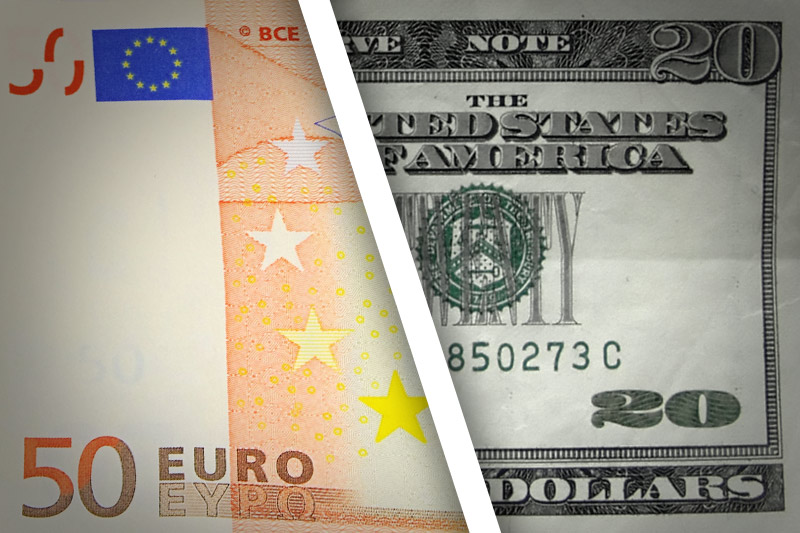Investing.com -- EUR/USD surged above 1.13 on Wednesday, amid a wave of soft U.S. economic data and better than expected growth in the euro zone over the first quarter.
The pair traded in a range of 1.1203 at the low end and 1.1382 at its peak, before settling at 1.1352 in U.S. afternoon trading, up 0.0139 or 1.24%. EUR/USD likely gained support at 1.1192, its low from May 10 and resistance at 1.1372, the high from May 6.
The U.S. Department of Labor said on Wednesday morning that import prices slid 0.3% in April, following a 0.2% decline a month earlier. On a year-over-year basis, import prices have fallen by more than 10% after the 10th consecutive monthly decline. The figured defied economists' expectations of a 0.3% gain.
At the same time, the U.S. Census Bureau said in a monthly report that retail sales remained flat in April, below economists' forecasts of a 0.2 gain. A reading of department store sales for the month showed a sharp decline of 2.2%, while sales of electronics and appliances fell by 0.4%. Since last April, retail sales have edged up only 0.9%, the lowest level dating back to late 2009.
The readings provide signals of modest inflationary pressures, augmenting the positions of the doves at the Federal Reserve, who have taken a cautious approach to the timing of its first interest rate hike in nearly a decade. Last month, the FOMC removed all calendar references to the timing of a potential hike. While it appears increasingly likely that the Fed will wait until September or even December before raising its benchmark Fed Funds Rate from its current level of zero to 0.25%, the FOMC still has not taken a June rate hike off the table.
Elsewhere, the Federal Reserve of Atlanta said in its monthly business report that inflation expectations for May ticked up to 1.9%, up from 1.7% in April, amid rising oil prices. In its forecast last May, the Atlanta Fed predicted that inflation would increase at a slightly slower pace to 1.6%. The poor economic indications on Wednesday weighed heavily on the dollar.
The U.S. Dollar Index, which measures the strength of the greenback versus a basket of six other major currencies, fell more than 1% to an intra-day low of 93.51 – the lowest level since early-February. By comparison, the index moved above 100 on six consecutive sessions in mid-March and reached as high as 100.27 on April 13. The index rebounded slightly in U.S. afternoon trading, ticking up to 93.69.
In Europe, GDP growth in the euro zone rose by 0.4% in the first quarter expanding at its fasted pace in nearly two years. Growth was particularly strong in France and Italy, which expanded at rates of 0.6% and 0.3% respectively. Both economies had stagnated in the previous quarter. For the first time since early 2010, the top four economies in the euro zone recorded growth.
One day after making a €750 million payment to the International Monetary Fund to repay a 2010 loan, Greece virtually eliminated the possibility of holding a referendum on a host of austerity measures deemed necessary to receive a critical stimulus package from a troika of creditors. Greece is running out of time until a four-month extension from its creditors, otherwise known as the "Master Financial Assistance Facility Agreement," expires in late-June.
Yields on U.S. 10-Year Treasuries rose three basis points to 2.295%, while yields on 30-Year Treasuries gained more than six basis points to 3.085%. On Monday, the yield on 30-year Treasuries moved above 3% for the first time since late-November. Yields on German 10-Year bunds increased five basis points to 0.72%.
